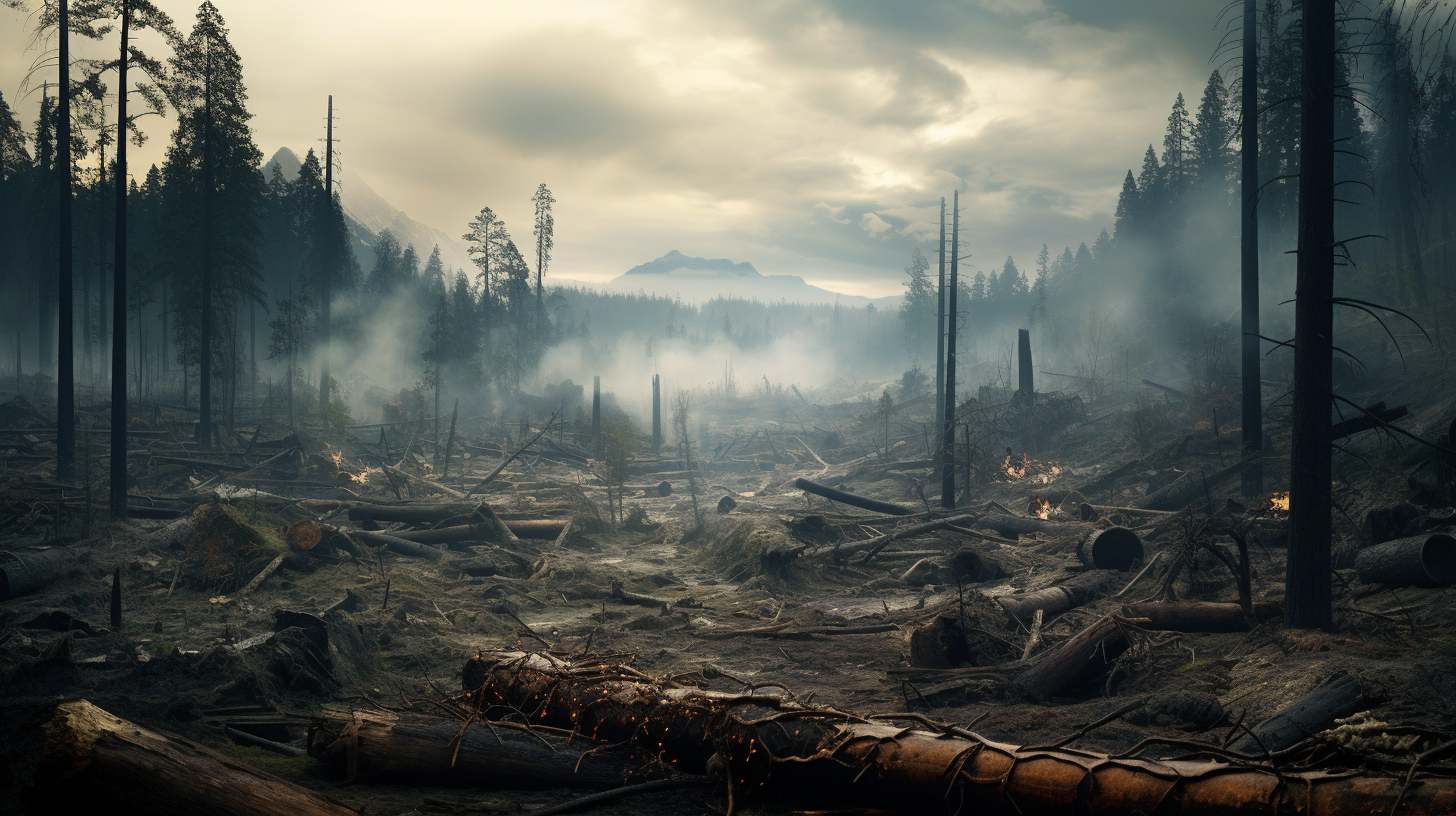In the acrid aftermath of destruction, where the ground is still warm to the touch and the scent of char remains, a most unlikely and fierce reawakening takes hold. From beneath the blackened soil, a surge of green begins its valiant struggle upward—a poignant act of defiance amid the desolate scenes of our ravaged woodlands. The ‘Rising from the Ash – Forests’ Fierce Reawakening’ documents this very revolt of nature against the odds.
The characteristic scene, once nostalgic with the chitters of wildlife and swathe of emerald canopies, now lies silenced and somber. And yet, in this stillness, the machinations of life are covertly at play. Spectators of this green dystopia are privy to a visual paradox—the simultaneous sculpture of death and birth.
Self-repairing Biodiversity: Phoenix Canariensis or the Canary Island Date Palm, is a remarkable exemplar, often being the first sentinel of recovery, its inflorescence piercing through the ash-gray palette. Dr. Mara Selvaggi, a renowned botanist, states, “These instances are immutable proof of nature’s resiliency—to emerge stronger where everything signals an end.” Her research suggests that certain species have adapted to not just endure, but also to flourish after fire, rejuvenating the landscape and, in a sense, cleansing it for future generations of flora.
The resilience of these plants remains a bittersweet beacon of hope, but it fosters an important question: should this natural resurgence evoke awe or serve as a dire reminder of what will incessantly reincarnate from the ruins if we continue on our path of environmental neglect?
Absent Canopies, New Climates: The repercussions of extensive tree loss are felt beyond the expansiveness of the forests themselves. Meteorologist Dr. Aaron Kim explains, “Without the cooling effect of the trees, local climates are inching warmer, bolstering evaporation rates and altering rain patterns.” The evacuation of tree canopies has essentially rerouted the jet streams, perpetuating a cycle of extreme weather events—further promoting the very wildfires that cleared them.
The Mycorrhizal Renaissance: What we observe above ground is merely the ostensible vestige of a far more intricate story unfolding beneath our soles. The mycorrhizal networks, once running like lifelines through the forest floor, severed by flames, now seek to reconnect. These fungal networks, integral for nutrient exchange among trees, are a testament to the connectedness required to foster life—a stark contrast to the fragmented societies we reside in.
Facing the microcosmic struggle of these trees and fungi, one contemplates if humanity can mirror such tenacity. Is our societal fabric as capable of rethreading after calamity? Or shall we remain fragmented, contributing to the slow decay of our once lush planet?
This article serves not to incite false hope but to chronicle the relentless resilience of nature in the oblique face of despair—a resilience that, perhaps, mankind should aspire to.
